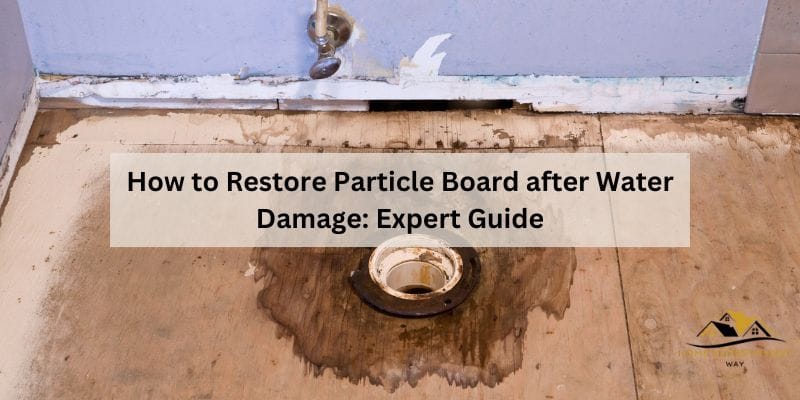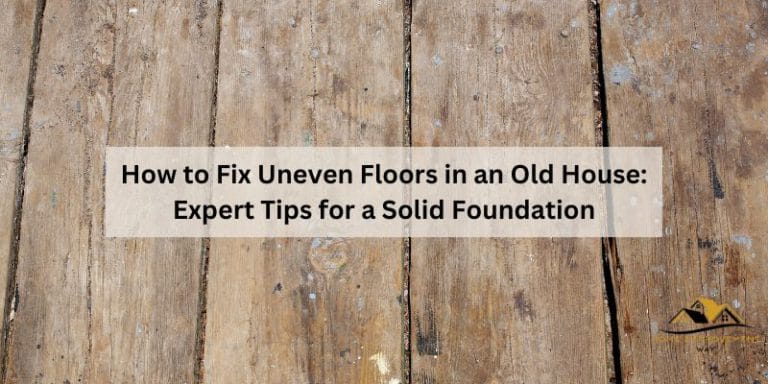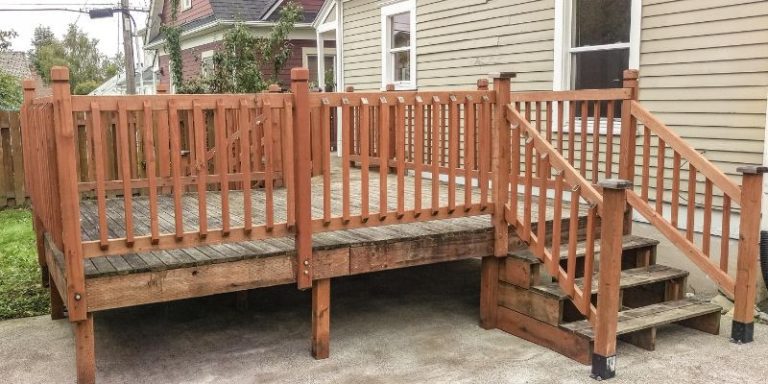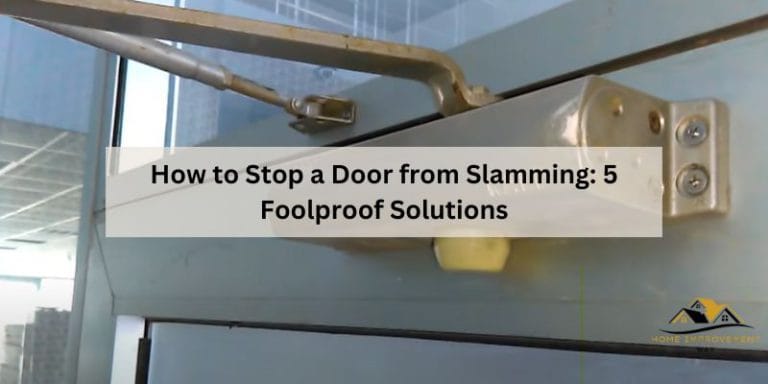How to Restore Particle Board after Water Damage: Expert Guide
To repair particle board water damage, remove the damaged area and replace it with a new piece of particle board. Particle board is a commonly used material for furniture and cabinets due to its affordability, but it is prone to damage from water exposure.
When water penetrates the particle board, it causes the board to swell, warp, and lose its structural integrity. While it may seem challenging to repair a water-damaged particle board, it is possible to restore it to its original condition with a few simple steps.
This article will guide you through the process of repairing particle board water damage, ensuring that your furniture or cabinets look as good as new. Read on to learn how to salvage your water-damaged particle board.
Assessing The Damage
Repairing particle board water damage can be a daunting task, but with the right steps, it can be done. Assessing the extent of the damage is crucial before starting the repair process, as it will determine the necessary steps to restore the board to its original condition.
Identifying Water Damage
Water damage to particle board can be a common issue, especially in areas prone to moisture or flooding. Identifying the presence of water damage is the crucial first step in effectively repairing your particle board. Look for visible signs such as discoloration, warping, or a soft and spongy texture. Pay close attention to areas near sinks, toilets, and windows where water leaks are more likely to occur. Early detection will help prevent further damage and keep the repair process manageable.
Evaluating The Severity
Once you’ve identified the water damage, it’s important to evaluate its severity. This assessment will guide you in determining the extent of the repair needed and the appropriate action to take. Consider these factors while evaluating the severity:
- Extent of Discoloration: Examine the affected area to determine how widespread the discoloration is. Is it limited to a small spot or has it spread across a larger surface?
- Warping and Swelling: Check for any noticeable warping or swelling of the particle board. Is it localized or has it affected adjacent areas?
- Presence of Mold or Mildew: Keep an eye out for signs of mold or mildew growth, as this indicates prolonged exposure to moisture.
- Structural Integrity: Assess whether the water damage has compromised the structural integrity of the particle board. Does it feel weak or flimsy?
By evaluating these factors, you’ll gain a better understanding of the severity of the water damage and the necessary steps to restore your particle board to its former strength and appearance.
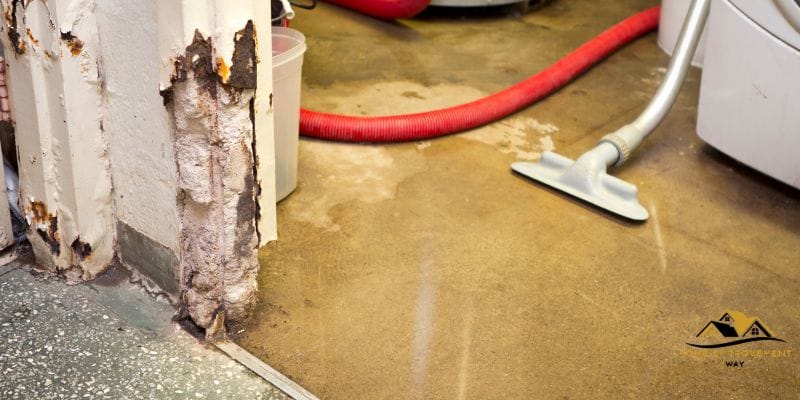
Drying Out The Particle Board
Repairing particle board water damage starts with drying out the board thoroughly. By following the proper steps, you can prevent further damage and restore the board to its original state. Take the necessary precautions and make sure the board is completely dry before attempting any repairs.
Removing Excess Water
When it comes to repairing particle board water damage, the first step is to remove any excess water. This will prevent further damage and ensure that the board dries out properly.
To remove the excess water, start by using a sponge or towel to soak up as much water as possible. Press firmly and repeat until the board feels dry to the touch. Be sure to wring out the sponge or towel into a bucket to avoid spreading the water back onto the board.
Using Fans And Dehumidifiers
Once you have removed the excess water, it is important to expedite the drying process. This can be done by using fans and dehumidifiers.
Fans help to circulate the air and speed up evaporation. Place one or more fans around the affected area, facing towards the water-damaged particle board. Ensure that the fans are set to their highest speed and positioned to maximize airflow over the board.
A dehumidifier can also aid in drying out the particle board by removing moisture from the air. Place the dehumidifier in the same room as the damaged area, close any windows or doors, and set it to a low humidity level. Regularly empty the dehumidifier’s water collection container to ensure it continues to extract moisture effectively.
Table: Tips For Drying Out Particle Board
| Tips |
|---|
| Ensure good ventilation in the room to allow moisture to escape. |
| Place the particle board in a warm and dry environment. |
| Elevate the particle board by propping it up on blocks or using a sawhorse. |
| Avoid using excessive heat sources, such as hairdryers, as they can cause warping. |
| Monitor the drying progress regularly to prevent mold growth. |
By following these steps and using fans and dehumidifiers, you can effectively dry out particle board that has been damaged by water. Remember to exercise patience, as the drying process may take several days to complete.
Repairing And Restoring The Particle Board
When it comes to repairing water damage on your particle board, it’s essential to act quickly and address the issue before it worsens. Luckily, with the right approach, you can restore your particle board back to its original condition. In this article, we’ll outline the steps you need to take to repair and restore the particle board, ensuring its longevity and durability.
Replacing Damaged Sections
If the water damage has caused significant deterioration in certain areas of your particle board, replacing those damaged sections is the best course of action. To do this, follow these simple steps:
- Carefully measure the damaged section.
- Cut a new piece of particle board to match the measurements.
- Remove the damaged section by cutting along the edges.
- Apply adhesive to the new particle board piece and fit it into the cut-out.
- Press down firmly to ensure a secure fit.
By replacing the damaged sections, you can eliminate weakened areas and restore the structural integrity of your particle board.
Sanding And Smoothing The Surface
After replacing the damaged sections, it’s important to sand and smooth the surface of the particle board to create a seamless finish. Follow these steps:
- Begin by using medium-grit sandpaper to remove any rough edges and unevenness on the repaired area.
- Afterward, switch to fine-grit sandpaper to achieve a smooth surface.
- Ensure that you sand in the direction of the wood grain to prevent further damage.
- Wipe away any dust with a clean cloth.
By sanding and smoothing the surface, you not only enhance the appearance of your particle board but also ensure a seamless restoration.
Applying Wood Filler
To complete the repair process, you’ll need to apply wood filler to any remaining imperfections or gaps on the repaired areas. Follow these steps:
- Select a suitable wood filler color that matches your particle board.
- Apply the wood filler using a putty knife, filling any cracks or dents in the repaired sections.
- Smooth out the filler using the putty knife, ensuring it blends seamlessly with the rest of the particle board surface.
- Allow the wood filler to dry completely before sanding it gently for a flawless finish.
Applying wood filler not only improves the appearance of the repaired particle board but also adds strength to the damaged areas, reinforcing them for long-term use.
Repainting Or Reapplying Finish
To repair particle board water damage, one effective method is repainting or reapplying the finish. This helps restore the appearance of the damaged areas and adds a protective layer against future water exposure. Follow the necessary steps for a successful repair.
Choosing The Right Paint Or Finish
When it comes to repairing particle board water damage, choosing the right paint or finish is crucial for a successful restoration. Not all paints or finishes are suitable for particle boards, so it’s important to select one that provides durability and moisture resistance. Look for paint or finish specifically designed for use on particle boards. These products typically contain additives that help seal the surface and protect it from further water damage. Additionally, opt for a low-VOC (volatile organic compounds) paint or finish to reduce the release of harmful fumes.
Preparing The Surface
Before applying paint or finish to your particle board, thorough surface preparation is essential to ensure a smooth and long-lasting result. Start by cleaning the damaged area with a mild detergent or wood cleaner to remove any dirt, grease, or residue. Use a soft cloth or sponge to gently scrub the surface, being careful not to apply too much pressure and further damage the wood. Once the surface is clean and dry, gently sand it with fine-grit sandpaper to smooth out any rough edges or imperfections. This will also help the paint or finish adhere better to the particle board surface.
Applying Multiple Coats
To achieve the best results, it’s recommended to apply multiple coats of paint or finish to the repaired particle board. Before starting, make sure each coat is completely dry before moving on to the next one. This will ensure proper adhesion and a smooth surface. Start by applying a thin, even coat of paint or finish using a paintbrush or roller, following the manufacturer’s instructions. Allow the first coat to dry completely before lightly sanding it with fine-grit sandpaper to smooth out any imperfections. Then, apply subsequent coats following the same process until the desired level of coverage and protection is achieved.
In conclusion, when repairing particle board water damage, choosing the right paint or finish, preparing the surface properly, and applying multiple coats are essential steps to ensure a successful restoration. By following these guidelines, you can effectively rejuvenate your particle board and protect it from future water damage.
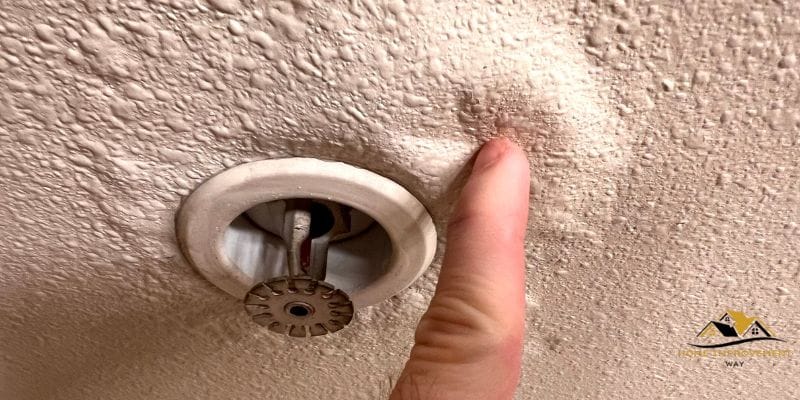
Preventing Future Water Damage
Repairing particle board water damage is crucial in preventing future water damage. By following the necessary steps, such as drying out the board, sanding it down, and applying a waterproof sealant, you can restore the particle board to its original condition and ensure it remains protected against water damage.
Water damage can wreak havoc on particle board furniture and can be a costly and frustrating problem to deal with. However, there are steps you can take to prevent future water damage and protect your furniture investment. In this post, we will discuss two effective methods to safeguard your particle board furniture: applying water-resistant sealant and using protective underlayment.
Applying Water-resistant Sealant
One of the most effective ways to prevent water damage to particle board furniture is by applying a water-resistant sealant. This sealant creates a protective barrier, reducing the absorption of water and shielding the particle board from potential damage. Applying a water-resistant sealant is a simple process that can significantly extend the lifespan of your furniture.
To apply the water-resistant sealant:
- Clean the surface of the particle board thoroughly to remove any dirt or debris.
- Choose a water-resistant sealant specifically designed for particle board furniture.
- Using a brush or foam applicator, evenly apply the sealant to the entire surface of the furniture, including the edges and corners.
- Allow the sealant to dry completely before using or placing any objects on the furniture.
Remember to check the manufacturer’s instructions for specific guidelines on application and drying times.
Using Protective Underlayment
Another effective method to prevent water damage to particle board furniture is by using a protective underlayment. This underlayment acts as a barrier between the furniture and any potential water sources, reducing the risk of water seeping into the particle board. It is especially useful when placing furniture in areas prone to spills or high humidity.
Here are some options for protective underlayment:
| Underlayment Option | Description |
|---|---|
| Rubber Mats | Thick rubber mats provide a sturdy and water-resistant layer of protection. |
| Plastic Sheets | Clear plastic sheets are affordable and easy to lay down underneath furniture. |
| Waterproof Tablecloths | Waterproof tablecloths offer a decorative way to protect your furniture from water damage. |
Choose the underlayment option that best suits your needs and preferences. Ensure that the underlayment covers the entire surface area where the furniture will be placed to provide maximum protection against water damage.
By applying a water-resistant sealant and using protective underlayment, you can significantly reduce the risk of future water damage to your particle board furniture. These methods not only protect your investment but also provide peace of mind, knowing that your furniture is safeguarded against potential water-related disasters. Invest a little time and effort in these preventive measures, and you’ll enjoy long-lasting and durable particle board furniture for years to come.
Conclusion
Repairing particle board water damage can be a straightforward process by following the steps outlined in this guide. By identifying the extent of the damage, drying the board thoroughly, sealing any exposed areas, and reinforcing weakened sections, you can successfully restore your particle board.
Remember to prioritize prevention and address any leaks promptly to avoid future water damage. With these techniques, you can confidently tackle particle board repairs and prolong the life of your furniture or cabinets.

